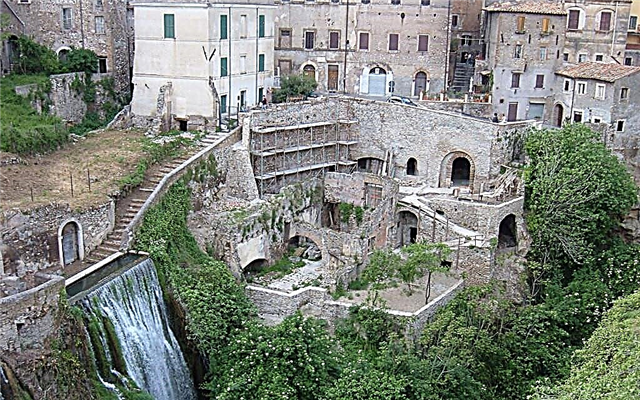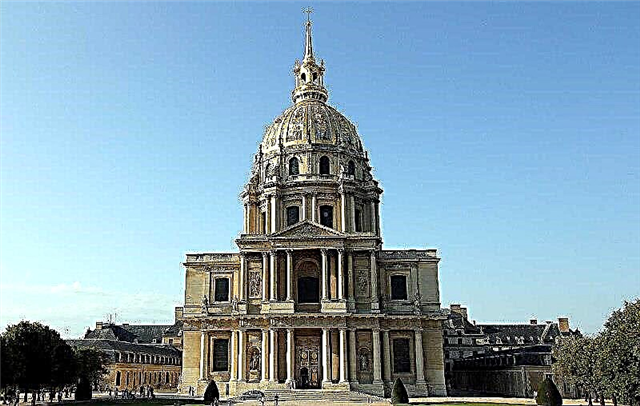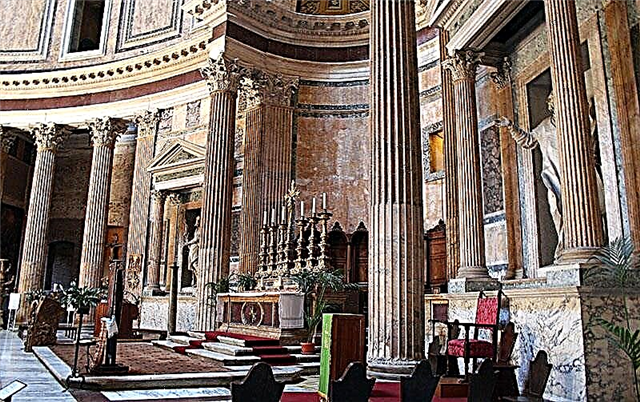Pantheon - The Temple of All Gods is located in Rome. This unique building is of great historical importance not only for Italy, but for the whole world. History, description, architecture, address with the display of the object on the map and its opening hours, interesting facts, ticket price - all this information is in our article. We will tell you: how to get there on your own, what rules must be followed when visiting and where you can stay near the temple.
History of the Pantheon in Rome
Built during the heyday of the Roman Empire. Until now, an inscription on the pediment of this building, testifying to the first founder of the cult temple, Marche Agrippa, has been preserved.
Architect of the Temple of All Gods

Since the construction stretched over many centuries, many took part in the construction of this temple, including the founder of this religious building Mark Agrippa, the famous architect of the Roman era Apollo of Damascus, the emperors Adrian and Septimia Sever. Each of them contributed to the construction and restoration of a unique building from the Roman era.
Temple construction

As a result of research on the markings on the bricks from which the walls were laid, it was proved that the construction was carried out under the direction of the famous architect of that era, Apollo of Damascus. For two centuries of its existence, the temple was destroyed by strong fires, often arising from lightning strikes. Therefore, in 126 A.D. by order of the emperor Hadrian, they began to restore the Pantheon.
Despite the fact that the temple was rebuilt, Emperor Hadrian kept the name of its founder on the pediment of the building. Later in 202 A.D. during the time of the emperor Septimius Severus, the building was restored, renewing it through facing and finishing works.
Colosseum, Roman Forum, Palatine Hill with one ticket
Time entrance to St. Peter's Basilica with audio guide
Fast track entry to the Vatican Museums and Sistine Chapel
Borghese Gallery: Reserved Entrance Ticket
Skip-the-line: Museums, Sistine Chapel, St. Peter's Basilica
Rome: hop-on hop-off sightseeing bus tour
Rome bus ticket: 24, 48 or 72 hours
St. Peter's Basilica with Dome Climb and Crypt Visit
From a pagan temple to a Christian one

It is an exception among the traditional Greco-Roman temples, erected in the form of a clear rectangle. Its centric shape is reminiscent of Italian dwellings and sanctuaries typical of pagan temples. Indeed, before the beginning of the VII century. The Pantheon was known as a pagan temple, in which the Romans asked for mercy from Jupiter and Mars, protection from Venus and Pluto, protection from Neptune, Saturn and Mercury. All sacrifices to numerous gods were performed on an altar installed opposite the opening in the dome. To appease the gods, animals were burnt on the altar. In 608, after the consecration of Pope Boniface IV, the pagan temple became Christian.
Pantheon architecture

The structure consists of a harmonious combination of clear geometric shapes: a parallelepiped-shaped portico, a hemispherical dome and a rotunda cylinder. The portico, decorated with two rows of high columns, completely occupies the square in front of the Pantheon, which creates the illusion of its massiveness.
The magnificent columns at the same time give the portico lightness and grace, masking the heavy and bulky cylinder of the temple. The walls of the rotunda, more than 6 m thick, are firmly installed on a massive foundation, which is 4.5 m deep and 7.3 m thick.

The cylindrical wall is supported by eight pillars connected by arches. It is no coincidence that the dimensions of the diameter and height of the rotunda coincide. The ancient architects deliberately used such calculations, which made it possible to mentally fit a ball into the space of the rotunda, half of which would be occupied by the dome. The construction masters of those times strove in this way to show a harmonious combination of a circle and a ball, symbolizing peace and eternity. The massive building, created from a ring of blank walls, is crowned with a dome that seems to be pressed into these walls.
Pantheon outside and inside

Initially, the temple was erected in such a way as to make an impression when visiting its inner part. Therefore, the interior decoration differs from the exterior in great grandeur. The portico leading to the building is decorated with sculptures, and 140 caissons located in five rows have been preserved high under the dome. Also well preserved inside the marble facing of the brick walls of the rotunda and the porphyry floor. The walls are divided into two tiers. There are 7 symmetrical niches in the lower tier.

Deep semicircular and rectangular niches in the walls make it possible to lighten the structure and diversify the geometrically enclosed space. Columns, pilasters and panels draw the eye to the huge dome that crowns the walls of the rotunda and creates a complete harmonious image of the temple. However, it cannot be said that due attention was not paid to the external design of the building of the temple. For the manufacture of 16 gigantic columns at the entrance, Greek marble and Egyptian granite were used. Outside, a huge dome is covered with gilded plates, and the double gates made of bronze, preserved from the ancient era, and leading to the rectangular lobby, are striking in their height, reaching 7 meters.
Dome

The temple of the gods is distinguished by the massive and round shape of the building, called the rotunda and crowned with a dome on top. If you look at the dome from the outside, it seems almost flat, but inside its enormous dimensions are impressive. The diameter of the dome is 43.5 m, which corresponds to the width of the rotunda and slightly less than the height of the building itself. From the time of construction until the 19th century. it was the largest in Europe and occupied half the volume of the entire building. A different composition of concrete was used depending on the height of the dome. The lower tiers were erected using hard travertine chips, and the upper tiers of the dome were erected using a solution of lighter materials - crushed pumice and tuff.

The dome of the building is created in the form of an ideal hemisphere, in the center of which there is a hole bordered by a bronze border. At noon, through a hole with a diameter of 9 m, the largest amount of sun rays penetrates into the building of the temple, forming a kind of light column. The dome, which is a hemisphere, combines the innovative engineering of ancient craftsmen and the classical architecture of religious buildings. The carved recesses inside the concrete surface of the dome play the role of decorative decoration in the form of 140 caissons and at the same time significantly lighten the mass of the vault, the weight of which reaches 5 thousand tons.
What is the hole in the dome for

The hole in the center of the dome, called the eye, symbolizes the sun. Since there are no window openings in the walls of the rotunda, it is only thanks to this huge opening that sunlight penetrates into the building. According to popular tradition, the hole was formed when the church mass began to sound. Evil forces that entered the building of the Pantheon, unable to withstand the sounds of the divine liturgy, destroyed the upper part of the dome in order to leave the sacred place forever. When animals were burned during the sacrifice, a large amount of acrid smoke was emitted through the opening in the dome. At this time, the Romans prayed, invoking the deities and hoping that the deities would be able to hear them sooner and accept the sacrifice.

In rainy weather, despite the enormous size of the "eye", water rarely penetrates into the temple. However, so that precipitation would not interfere with parishioners attending the temple and listening to Mass, drain holes for water were prudently equipped in the floor. It is worth noting that the competent engineering calculations of the ancient masters created the "eye" in such a way that the raindrops do not let the constantly moving up streams of warm air pass through.
Interesting Facts

Many legends and stories are associated with the Pantheon and its construction. From those ancient times to the present, you can often hear from the Romans that the dome of the temple was built on a huge pile of rubbish poured inside a building under construction. To quickly get rid of the garbage after the completion of construction, by order of the emperor, gold was hidden in it. As for the "eye of the Pantheon", scientists have put forward the assumption that the temple served as a sundial. Indeed, throughout the year the sun illuminates individual parts of the temple in different ways, and on the day of the founding of Rome - April 21, the heavenly body brightly illuminates the entrance.
In those days, this phenomenon was quite symbolic, since the emperor was the first to enter the temple, illuminated by dazzling sunlight. There is an opinion that the ideal shape of the dome prompted Nicolaus Copernicus to the idea of the heliocentric structure of the universe, thanks to which the scientist even managed to accurately calculate and prove that the center of the universe is not the Earth, but the Sun. The Pantheon became the first Roman temple, inside which not only priests could get inside, but everyone who wanted to turn to the gods with prayer.
Who is buried in the temple

The Pantheon was admired by many great people. Michelangelo considered this temple to be the creation of the angels themselves. Raphael called the Pantheon a place that unites heaven with earth and gods with people, and dreamed of being buried here.
The Temple of All Gods has become the place where the bodies of many famous people rest, among whom the master of painting Raphael was the first to be buried, and later the famous architect Baldassare Peruzzi, musician Arcangelo Corelli, sculptor Flaminio Vacca. It is also a burial vault for the crowned persons: Queen Margaret, as well as kings Umberto I and Victor Emmanuel II.
Where is it and how to get there

Easy to reach by metro to Barberini station, tram 8 and many city buses.
Address: Piazza della Rotonda, 00186
The temple, built in the era of the Roman Empire, receives visitors daily from 8.30 to 19.30. Only on Sunday works from 9.00. until 18.00. On holidays, it accepts tourists from 9.00 to 13.00. and does not work on Easter, January 1, and December 25. A visit to this unique attraction can be combined with a visit to other equally significant places: the Colosseum, St. Peter's Basilica, the Roman Forum and the Vatican Museums. Despite the daily work, it is not easy to get to the temple due to the large influx of people who want to visit this legendary place. Even in winter, when the influx of tourists subsides, there is a queue to the temple. Therefore, it is better to come to the opening in the morning or check into a hotel closest to the Pantheon.
Visiting rules

Going to inspect the attraction, you should follow certain rules:
- Skip stocks of food and drinks
- Even in extreme heat, it is not customary to enter the temple building with bare shoulders and knees.
- It is forbidden to use mobile phones
If you follow these simple rules, you can safely go to inspect this unique temple. Fortunately, no one forbids photographing and filming here. Plus, you don't have to pay to enter.
Where to stay - Pantheon hotel

We recommend that you consider this particular hotel, as it is located just 50m from the temple of all gods. In addition, it is convenient to get to other attractions, for example, in just a couple of minutes you can walk to the famous Trevi Fountain. The hotel itself deserves special attention. The building was built in the 17th century. Its impeccable interior immediately immerses you in a pleasant atmosphere. Here, every detail is chosen with elegance. The rooms have everything you need for a comfortable stay.
There are several categories of rooms:
- luxury
- Triple room
- budget single room
- double or twin room
- quadruple room
Pets are allowed and there is no additional charge. There are famous brand shops, cafes and restaurants nearby.
Augusta Lucilla Palace
Rome
50 meters from the magnificent Roman Pantheon
Good based on 541 reviews

We also recommend other accommodation options in Rome:
Augusta Lucilla Palace
Rome
5 minutes walk from Repubblica Metro Station

Hotel Milton Roma
Rome
Colosseum - 12 minutes walk

Twentyone Hotel
Rome
15 minutes walk from the Vatican and St. Peter's Basilica
Good based on 2,823 reviews

Book your transfer from Rome airport to your hotel in advance. The driver will meet you with a sign with your name on it, help you with your luggage and take you comfortably to your destination. The price is indicated for a car of a certain class (from economy to Minibus for 19 seats) and does not depend on the number of passengers and the address within the city. You can additionally order a child seat.











